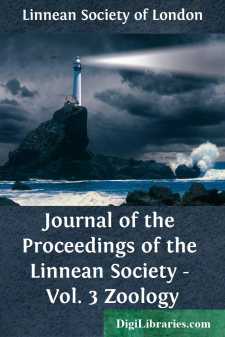Categories
- Antiques & Collectibles 13
- Architecture 36
- Art 48
- Bibles 22
- Biography & Autobiography 813
- Body, Mind & Spirit 142
- Business & Economics 28
- Children's Books 14
- Children's Fiction 11
- Computers 4
- Cooking 94
- Crafts & Hobbies 4
- Drama 346
- Education 46
- Family & Relationships 57
- Fiction 11829
- Games 19
- Gardening 17
- Health & Fitness 34
- History 1377
- House & Home 1
- Humor 147
- Juvenile Fiction 1873
- Juvenile Nonfiction 202
- Language Arts & Disciplines 88
- Law 16
- Literary Collections 686
- Literary Criticism 179
- Mathematics 13
- Medical 41
- Music 40
- Nature 179
- Non-Classifiable 1768
- Performing Arts 7
- Periodicals 1453
- Philosophy 64
- Photography 2
- Poetry 896
- Political Science 203
- Psychology 42
- Reference 154
- Religion 513
- Science 126
- Self-Help 84
- Social Science 81
- Sports & Recreation 34
- Study Aids 3
- Technology & Engineering 59
- Transportation 23
- Travel 463
- True Crime 29
Journal of the Proceedings of the Linnean Society - Vol. 3 Zoology
Categories:
Description:
Excerpt
On the Importance of an Examination of the Structure of the Integument of Crustacea in the determination of doubtful Species.—Application to the genus Galathea, with the Description of a New Species of that Genus. By Spence Bate, Esq., F.L.S.
[Read January 21, 1858.]
Of the various genera of Decapod Crustacea none are more interesting, or more difficult of description, than those which constitute the family Galatheadæ.
The interest attaching to these forms arises from the intermediate position which they occupy in the natural arrangement of the class, their structure placing them between the Macrura and Brachyura; in accordance with which we find that, whilst Professor M.-Edwards classes them among the Macrura, Professor Bell, in his work on the British Crustacea, places them (more correctly, as we think) in the intermediate group of Anomura.
This opinion is fully borne out both in the development of the animals and in their structure in the adult state.
The early form of the larva bears, anteriorly, a resemblance to the Brachyural type, whilst the caudal appendages assimilate to those of the Macrura. The same conditions obtain in the young of Anomura. At the time of birth, the larva, like that of the Brachyura, has only the two gnathopoda developed, whilst the termination of the tail is like that of a fish, as in the Macrura. In the adult, the internal antennæ possess short flagella and complementary appendages, such as exist in the order Brachyura, whilst the external antennæ have the long and slender flagella proper to the Macrura. The scale, however, commonly appended to the external antennæ in the latter order is wanting, a circumstance which exhibits a relation to the Brachyura.
An examination of the legs shows that the coxæ are fused with the thorax, as in the Brachyura, and not articulated with it as in the Macrura, whilst, on the other hand, the posterior division and caudal termination approach the Macrural type more nearly than that of the Brachyura, the animal thus assuming a character intermediate between the two orders.
But in the description of the several species of the genus Galathea, a peculiar difficulty appears to arise, originating in the affinity which they bear to each other. So close, in fact, is the approximation, that the descriptions of the best writers will scarcely avail for the distinction of the individual species without the assistance of figures. This arises from the fact that the general characters, upon which the descriptions are based, vary, in this genus, only in their comparative degrees of development.
In the three species recognized in Professor Bell's work on the British Crustacea, it will be found that each species retains the same characters in greater or less degree.
Galathea strigosa is peculiar for the spinous character of the carapace and cheliform legs. Every spine, however, is repeated in both the other species, only less developed. We find the rostrum furnished with four lateral teeth on each side, a character which also exists in each of the other species; and although close observation may detect a slightly different arrangement in the relative position of these teeth, the differences are not of sufficient importance to enable a naturalist thence to derive a specific distinction, unless the peculiarity is seconded by some more unqualified character less liable to be affected by any peculiarity of condition.
In order to arrive at more certain results in the identification of species, we think that the microscopic examination of the surface of the integument will be found peculiarly useful.
This mode of examination of species may also be applied to a considerable extent throughout the Crustacea generally with great advantage; and if found valuable in recent, there can be no doubt that it will prove of far greater importance in extinct forms, where parts on which the identification of species visually rests are lost, and fragments only of the animal obtainable.
It should be borne in mind that, as the structure in question undergoes modifications more or less considerable in different parts of the animal, it will always be advisable to compare the corresponding parts with each other.
Applying this test to the known species of Galathea, we perceive that the structure of the integument upon the arms, independent of the marginal spines, exhibits a squamiform appearance, but that the scales, which characterise the structure, possess features peculiar to each species....


